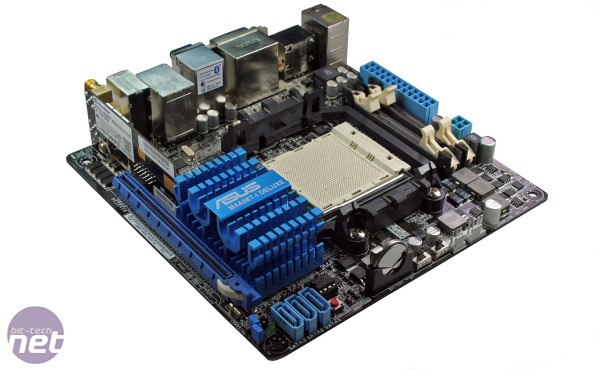Performance Analysis
The performance of the M4A88T-I with only the integrated GPU was comparable to Gigabyte's micro ATX 880GMA-UD2H motherboard, but with significantly better performance when multi-tasking. While the Gigabyte board is abnormally slow compared to the rest of the pack - we rechecked the scores and they were consistent - the Asus M4A88T-I Deluxe kept pace with the other boards using a discrete graphics card.With that Radeon HD 5870 graphics card installed, the performance is again comparable in image editing and multi-tasking, but dropped off quite a bit when video encoding at stock speeds.
When overclocked, the Asus mini-ITX board obviously had a difficult time keeping up with the micro-ATX and full ATX 880G boards that can crank the CPU further - the difference is evident in the results with an overall drop of around 5-10 per cent. If you really demand the performance, then sacrificing smallness to use a larger board with meatier power hardware definitely pays off.
The gaming performance wasn't wonderful but at least the board was within sight of the other boards at stock speeds, although still dropped a couple of frames per second. When overclocked the board faired better, with an higher minimum frame rate of 24fps making it faster than the full-sized Asus M4A88TD-V EVO/USB3 even if it's average was still the lowest of the boards we've tested (by 1fps).
Conclusion
While the performance of the Asus M4A88T-I didn't set new world records, it at least offered a fair degree of overclocking and has built-in core unlocking that works very well. As one of the very few AMD Socket AM3 mini-ITX boards out there, it's the only option if you want to go the green route rather than the blue. It's certainly the only option if you want six CPU cores in a tiny shoebox of a case. The board is packed with features for such a small PCB, which is beneficial for those wanting a compact, tiny build.Comparatively at it's £100-or-so price tag, the Gigabyte H55N-USB3 undercuts the ASus by £15, but lacks the WiFi that Zotac's H55 mini-ITX motherboard offers for £110, which is a few quid more than the Asus. This is slightly disingenuous though, given that the cheapest LGA1156 CPUs is around £75 while there's everything from the super-cheap £25 Semprons to the £155 Phenom II X6 1055T to choose from for a Socket AM3 board.
The Asus does run a bit hot for our liking though. It's not the heat of chipset heatsink that worries us so much as it's meant to get hot and has its own overheat safety switch, it's more the naked power hardware which might overheat in compact or low-airflow cases. We strongly advise planning your build carefully before committing; using a CPU heatsink that blows air downwards towards the board will certainly help. While the board survived a day of high temperatures and overvolting with only one hiccup, we'd want to house it in a breezy case to run that overclock 24/7.
Because it's the only mini-ITX AMD board we've seen to date, the Asus is a default option for an AMD fan's next mini-ITX build, but the WiFi, Bluetooth and Asus extras make the M4A88T-I a desirable mini-ITX board as well as the only one we've seen. If you're not committed to the mini-ITX form-factor, a micro-ATX board is usually cheaper and has more uses. If you are signed up for a mini-ITX build, the M4A88T-I Deluxe is a solid, stable board that focuses on features over performance - there's no shame in that, and if you want something 'fast enough' it's certainly a short-lister.
- Performance
- x
- x
- x
- x
- x
- x
- x
- -
- -
- -
- 7/10
- Features
- x
- x
- x
- x
- x
- x
- x
- x
- x
- -
- 9/10
- Value
- x
- x
- x
- x
- x
- x
- x
- x
- -
- -
- 8/10
- Overall
- x
- x
- x
- x
- x
- x
- x
- x
- -
- -
- 8/10

MSI MPG Velox 100R Chassis Review
October 14 2021 | 15:04










Want to comment? Please log in.